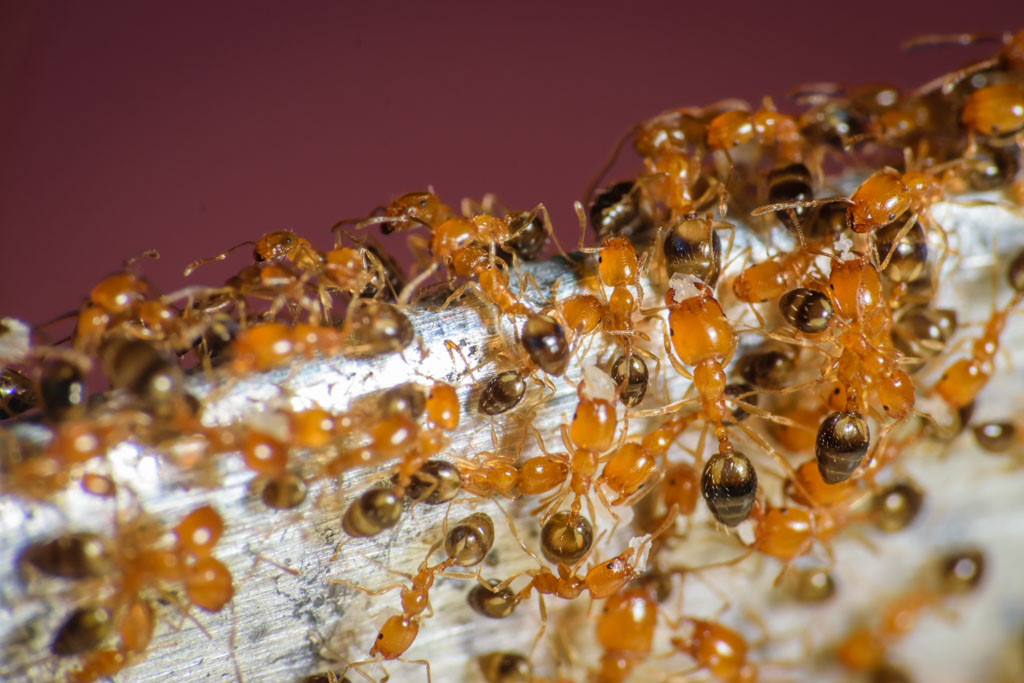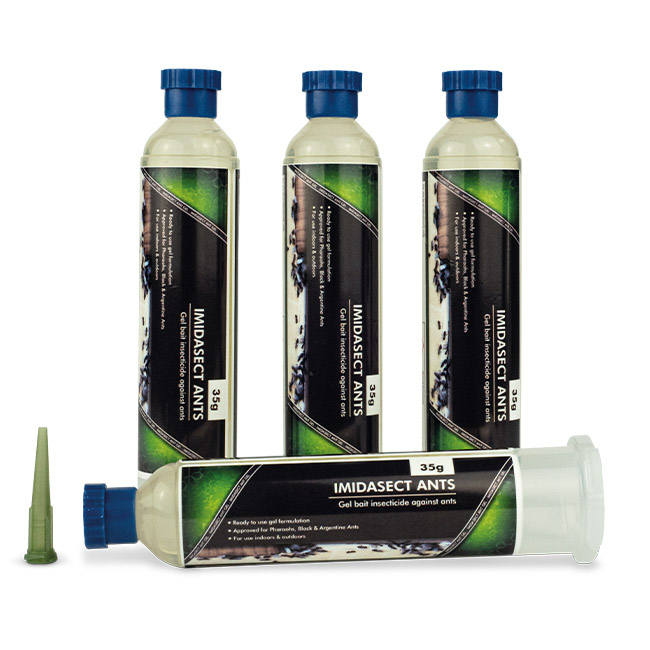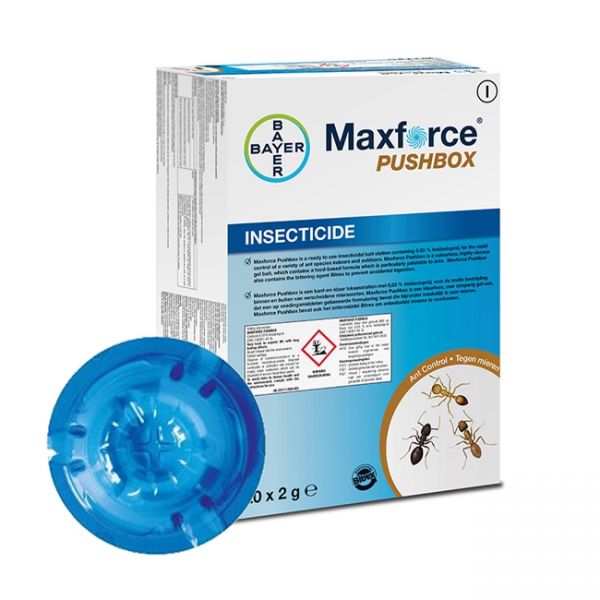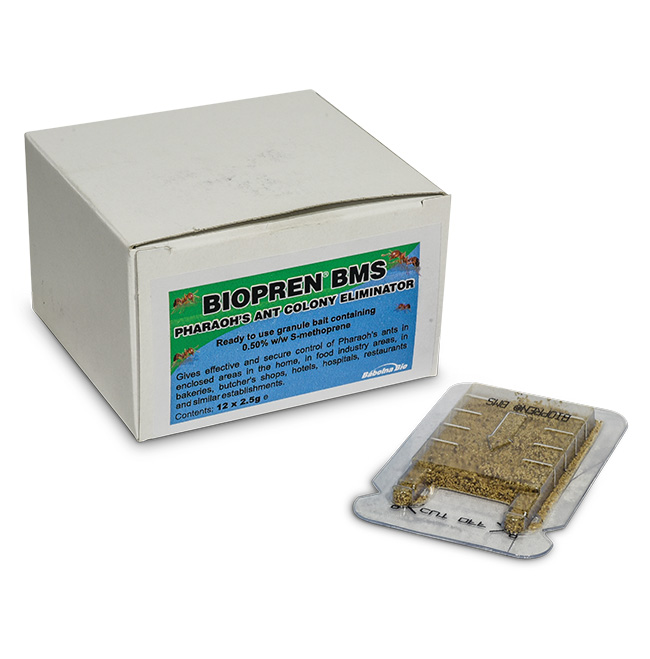Pharaoh's Ant (Monomorium pharaonis)
 |
Pharaoh ants prefer to nest in warm (25°C), humid (80%) areas, which are near sources of food and/or water. Nests are usually located in inaccessible areas such as wall voids, behind skirting boards, in furniture, under floors and between linens. This is a trail-making ant that can spread disease mechanically.
Identification:
Workers are only 2mm long, the Queen 5mm long and both are yellow in colour with darker markings on the abdomen. In temperate climates it is an indoor species associated particularly with large facilities such as hospitals, prisons and blocks of flats. Pharaoh's ants may carry disease organisms and they will contaminate wounds and sterile materials, which is especially important in hospital environments. Their ability to travel through ducting and buildings means infestations can become very widespread.
Biology:
The egg to adult stage is reached in 5 to 6 weeks. Colonies tend to be very large with the workers often numbering to several thousand. There are usually several hundred reproductive females present in a colony. When a nest gets too large young queens and a number of support workers leave the colony and find alternative nesting sites. This is known as "budding" and the new colonies are often called satellite nests. Workers live about ten weeks, with only up to 10% out foraging at any given time for food/water Queens can live up to 12 months, and the males die within about 3 to 5 weeks after mating. Queens lay approx. 350 eggs, larvae hatch after 2 weeks and are fed by workers, after a number of skin changes pupation takes place. Full-grown ants hatch soon afterwards depending on temperature.
Control:
The use of insecticide sprays and powders against these ants is not recommended. This is because the chemicals in them cause nests to split up. As the nests can contain several queens this can result in a single nest splitting up to become several and in the long run making matters worse. Successful control can only be brought about by using baits that worker ants feed on and then take back to the nest to feed the queens and juvenile stages. Baits can either contain tiny amounts of a poison that will kill the ants after a short period of time or an insect hormone that disrupts the breeding success of the queens and prevents the juvenile ants from developing properly into adulthood. Complete eradication can take up to 13 weeks using the above control methods, although a reduction in ant numbers should be noticed after 28 days.
Products to control Pharaoh's Ants:
|
Imidasect Ant Gel (35g tube) |
Maxforce Pushbox (20 x 2g) |
Biopren BMS (12 X 2.5g Sachets) |



